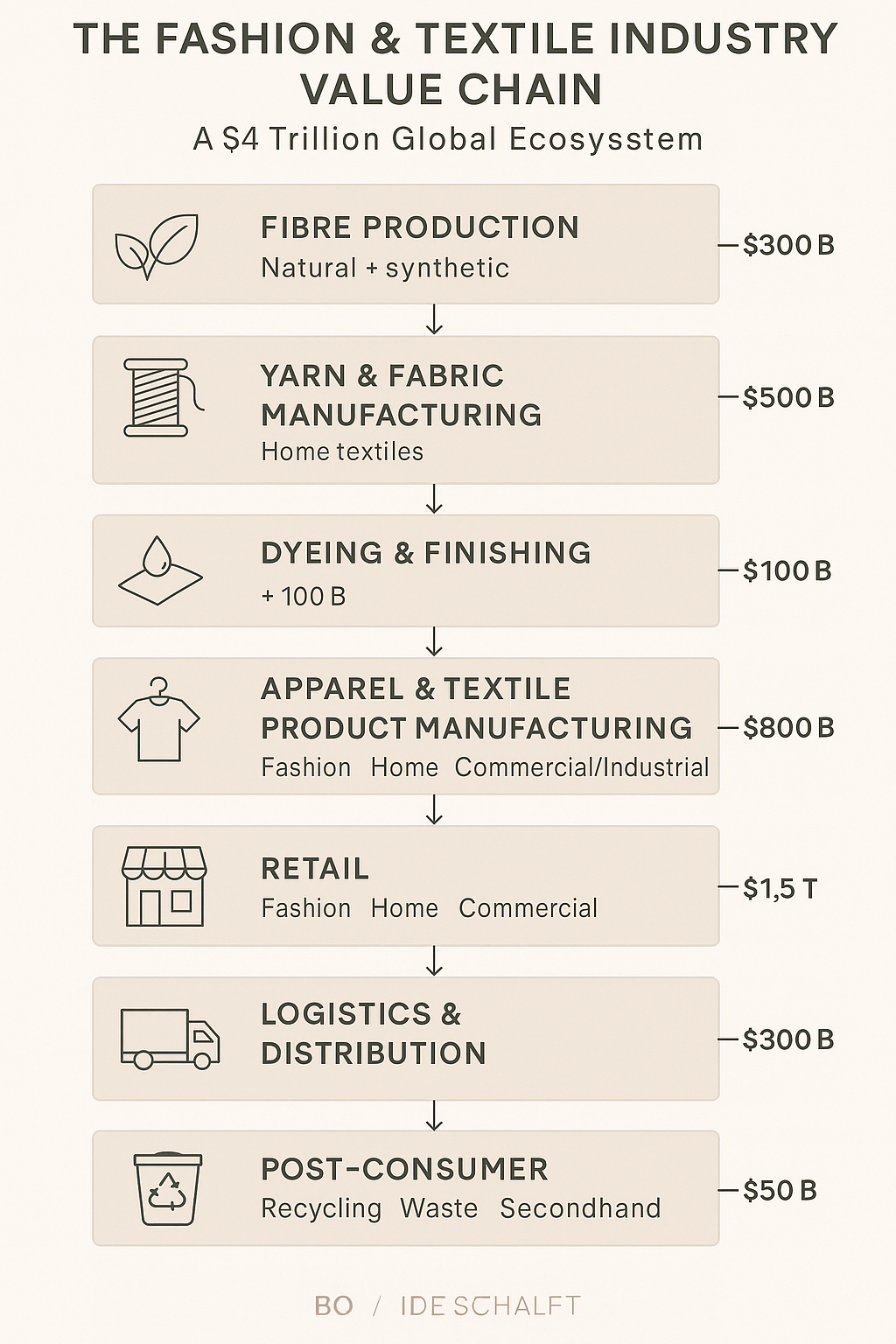The Complex Truth About Sustainability in Fashion and Textiles
When discussions about sustainable fashion arise, a common solution is often proposed: consume less and waste less. While this approach is logical and necessary, it overlooks the intricate realities of the global fashion and textile industries.

A Global Economic Powerhouse
The combined global market value of the fashion and textile industries—across apparel, home textiles, automotive, industrial, and commercial applications—is estimated at over USD 4 trillion. These industries collectively employ more than 100 million people worldwide, with a significant portion of the workforce made up of women in developing nations.
This makes the call to "buy less" far more complex than it appears. Reducing consumption too abruptly or without systemic change could trigger significant social and economic consequences.
The Environmental Cost
The environmental footprint of these industries is significant. The fashion and textile sectors are responsible for an estimated 5% to 10% of global greenhouse gas emissions, and account for about 20% of global industrial water pollution, largely due to dyeing and finishing processes.
But another major issue is gaining attention: microplastic pollution.
Textiles and Microplastics: The Hidden Threat
Synthetic fibres—particularly polyester, nylon, and acrylic—shed microplastics every time they're washed. These tiny fibres pass through water treatment plants and enter rivers and oceans, where they are consumed by marine life and eventually make their way up the food chain.
- An estimated 35% of microplastics in the ocean originate from synthetic textiles, according to the International Union for Conservation of Nature (IUCN).
- A single load of laundry can release hundreds of thousands of microfibres into the water system.
- These microplastics do not biodegrade, and their long-term impact on ecosystems and human health is still being uncovered—but the outlook is deeply concerning.
Innovation The Solution We Need
There is hope in the form of technological and material innovation:
- Compostable synthetic fibres are being developed to replace conventional petroleum-based materials and eliminate persistant microplastics
- Enzyme- and organic-based dyes help reduce water toxicity and our health.
- AI is being used to manage inventory and logistics more efficiently, minimizing waste before it starts.
- Closed-loop recycling initiatives aim to recover and reuse textile materials that would otherwise go to landfill.
These solutions could significantly reduce the environmental impact of the industry, however, these solutions still represent a tiny fraction of the market. Most innovations are stuck in the pilot phase or only used by a niche group of forward-thinking brands. Without significant scaling—and broad consumer and industry support—their impact will remain limited.
What Needs to Change
To move the needle, we need action on several fronts:
- Consumers: Supporting brands using greener materials and practices, even if it means paying slightly more, and disposing of clothing responsibly—such as through textile recycling or composting (where possible).
- Industry leaders: Moving sustainable practices out of R&D and into the mainstream supply chain, even if margins take an initial hit.
- Policymakers: Introducing regulations that both support innovation and penalize pollution, including efforts to limit microfibre shedding and encourage better end-of-life options for garments.
- Education: We need far greater awareness of the environmental cost behind the clothes and textiles we use—not just fashion, but also homeware, automotive interiors, and industrial fabrics. Understanding the true impact of our decisions—from the type of fibre we wear to how we wash and discard garments—is the first step in changing them. This includes how microplastics enter our oceans, how dyeing affects freshwater ecosystems, and how fast fashion drives global waste.
A Problem Worth Solving
This is not a binary problem with a simple fix. The fashion and textile industries are massive, interconnected, and deeply embedded in our global economy. But the environmental stakes—rising emissions, water contamination, microplastic pollution—demand coordinated, urgent action.
We don’t just need to buy less. We need to buy better, produce smarter, and scale the right innovations before irreversible damage is done.



